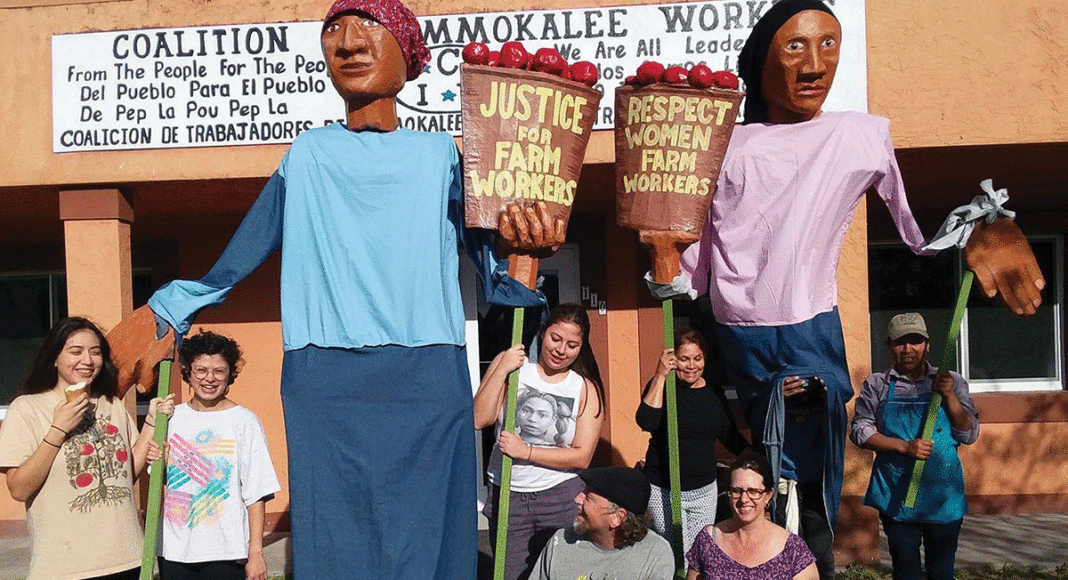Effective political protest these days requires more than just showing up and solemnly marching to city hall. It requires a degree of savvy, a media plan and a bit of creativity.
The Santa Cruz-based organization ARRT (Artists Respond and Resist Together) is all about adapting protest to the media-saturation age. Formed just days after Donald Trump’s inauguration, ARRT has made it a mission to keep local artists engaged politically by tapping into their creative impulses.
With another presidential election on the horizon, ARRT is planning an action-packed summer, the foundation of which is an art show called Human/Nature, featuring the work of 30 local artists on the broad, inescapably political theme of how humans live in to the natural world. While the works of Human/Nature are on display at the Resource Center for Nonviolence (July 26-Sept. 14), ARRT will be sponsoring three events:
On July 27, filmmaker Sasha Friedlander will present a screening of her new documentary Grit, which tells the story of political protest in the aftermath of a harrowing natural disaster in Indonesia (think a volcanic eruption of mud that buried 16 villages), brought on by careless industrial drilling.
On Aug. 9, three activist artists—David Solnit, Martabel Wasserman and T.J. Demos—will gather for a community conversation about strategies for potent political protest.
And on Aug. 10, Solnit, a veteran of direct-action demonstrations for more than 20 years, will lead a day-long workshop on the mechanics of art-oriented protest in the realms of climate change and social justice. The workshop is designed for the artistically inclined (or otherwise) to make flags, banners, murals, and other work with stenciling, screenprinting or other methods.
“We’re just trying to bring more people together through these art experiences,” says Sara Friedlander, co-founder of ARRT, “and to engage people rather than having them not knowing what they can do.”
Sara is the mom of Sasha Friedlander, whose previous film Where Heaven Meets Hell was also the story of an environmental disaster in Indonesia brought on by extractive industrial interests. The power of Grit, says Sara Friedlander, is in its ability to inspire. “It’s really about a woman who is indigenous with no education, and how she becomes one of the leaders of this movement. And her daughter, who is 12 [when the disaster happens], also evolves into a leader. So we’re witnessing the making of a citizen activist.”
The Aug. 9 event is the second attempt to spark collaborative energy after a similar event in 2018. “It pulled people together like no other conversation we’ve ever had in Santa Cruz,” says Friedlander of last year’s artist/activist panel discussion. “We had about 75 people in that room, and everybody connected with someone they didn’t know to do some project.”
The Aug. 10 workshop throws the spotlight on the activist work of Solnit, the Oakland-based artist whose career in protest includes the iconic 1999 protests against the World Trade Organization (WTO), and successful demonstrations for workers rights in the Florida agricultural industry.
“The last couple of decades, I’ve become more and more interested in how artists, performers, and musicians use art to create social change,” says Solnit, whose work is mostly in the visual arts, particularly large puppets. “I usually sit with a community and think of what story they want to tell. The value I give is, ‘OK, here’s how we can take that story, make it 10-feet tall and made of cardboard, with materials you can find in anyone’s house.’”
Last year, Solnit was part of a large protest greeting the Global Climate Summit in San Francisco, in which he urged activists to paint images of the future on the streets with washable paint. “We figured we ended up with about 2,000-3,000 people painting in 50 groups, each group doing a 30-foot mural,” he says. “And that made it a very different kind of event. Each group got to serve their own message, instead of having to listen to one person with a microphone.”
The WTO protests in ’99, says Solnit, offer a vivid example of how creative political protest can create compelling images in the public mind that linger for years. “We had people stilt-walking as butterflies and holding giant hand-made signs and puppets in the face of police dressed like Darth Vader shooting projectiles at us,” he says. “We created a visually dramatic contrast, and it was very effective.”
‘ARRT and Human/Nature’ runs July 26-Sept. 14; opening reception Friday, July 26, from 7-9 p.m. ‘Grit: Q&A’ with filmmaker Sasha Friedlander on Saturday, July 27, 7:30 p.m.; Second-annual community conversation with David Solnit, TJ Demos and Martabel Wasserman on Aug. 9, 7 p.m.; ‘Artmaking for Change,’ a workshop with David Solnit, Aug. 10, 10 a.m.-4 p.m. All events at the Resource Center for Nonviolence, 612 Ocean St., Santa Cruz. arrtsantacruz.home.blog.













